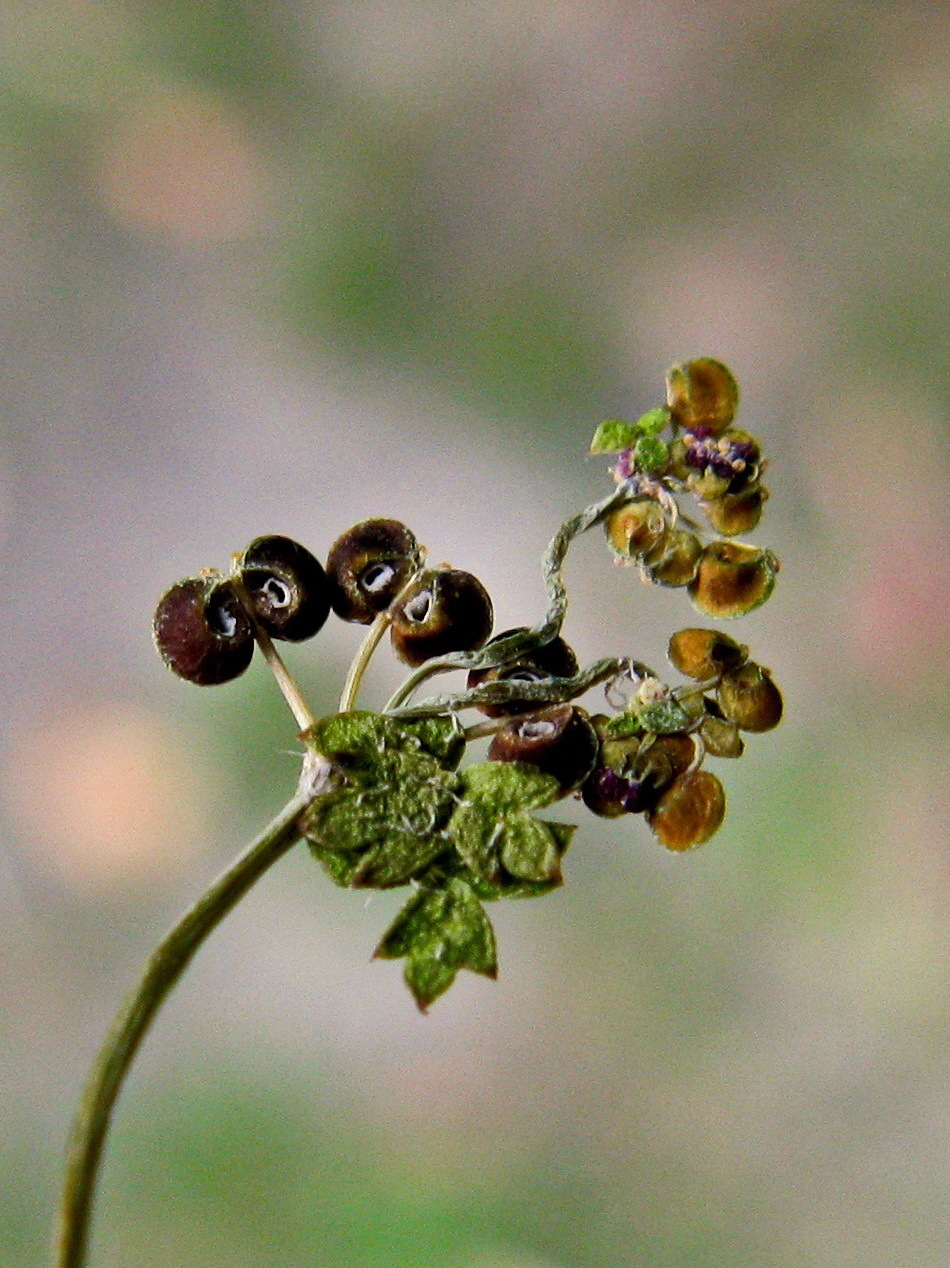Hydrocotyle foveolata
H.Eichler Yellow Penny-wortSpreading to erect annual, stems usually branching from base, 2–15 cm high and across, glabrous or hairy. Leaf-lamina to 20 mm across, palmately divided or dissected into 3 or 5 lobes or segments, glabrous or glabrescent; segments obovate-cuneate, 2–6 mm long, apex cuneate, 3-toothed; petiole to 2 cm long, sparsely pilose; stipules membranous, lacerate-fimbriate. Umbels simple, leaf-opposed, 3–5 mm diam., usually sessile (terminal ones often pedunculate), 3–6-flowered; pedicel to 2 mm long. Petals yellow. Fruits compressed laterally, c. 0.7 mm long, c. 2 mm wide; mericarps red-brown to almost black, virtually flat between the acute intermediate and dorsal rib, with a deep, white-rimmed pit more or less encircled by each of the intermediate ribs Flowers spring and summer.
LoM, MuM, Wim, GleP, VVP, VRiv, GipP, OtP, WaP, Gold, CVU, GGr, DunT, NIS, EGL, EGU, WPro, HSF, HNF, OtR, Strz, VAlp. Also SA, NSW, Tas. Widely distributed in a variety of woodlands and thickets on sandy soils, or amongst rocks, often in low-lying or winter-wet sites.
Commonly occurring with other annuals and bryophytes in species-rich herb mats, often including Hydrocotyle callicarpa which is distinguished by its usually more erect habit, darker, less deeply divided leaves, pedunculate umbels and narrower, non-rimmed pits.
Duretto, M.F. (1999). Apiaceae. In: Walsh, N.G.; Entwisle, T.J., Flora of Victoria Vol. 4, Cornaceae to Asteraceae, pp. 256–258. Inkata Press, Melbourne.
 Spinning
Spinning

